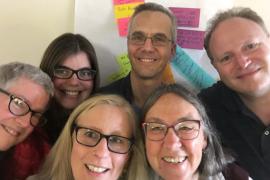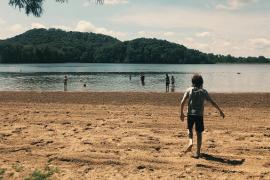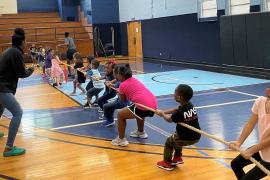Greetings camp evaluators! Congratulations on making it to the end (or very nearly the end) of your summer season. I am so excited to present the following guest post for this week’s Research 360 blog — what Mary describes below is something we’ve discussed before on this blog (here, here, here, and here), and something I feel we should all discuss more regularly in our camp work. As you’ll see below, that topic is program quality, which is a way of describing the things we do at camp — staff practices, activities, policies, and our overall camp culture — and their impact on camper learning.
Here’s Mary:
Hello! My name is Mary Arnold, I am a professor and 4-H youth development specialist at Oregon State University. In my Extension specialist role, I get to work in that liminal space between research and practice. In this space I spend a great deal of time translating research into effective youth development practice in 4-H programs, which lately has focused on the importance of developing programs that provide a nourishing developmental context for young people. By developmental context I mean the settings, experiences, and activities that 4-H programs provide to help youth to grow and thrive. This focus is important for two reasons, first because high quality programs lead to better outcomes, and second, because program quality is something that youth practitioners have a great deal of control over. If practitioners develop and implement high quality programs, my job as an evaluator is much easier.
As the field of youth development took hold in the 1990s, there was an immediate corresponding interest in measuring program outcomes. Unfortunately, outcomes were often measured without consideration of what really happened in the program. Fortunately, research about youth development programs is now increasingly focused on what happens in programs and how what happens leads to outcomes. As an evaluator, improving programs and articulating the theory of action that connects programs to outcomes increases the rigor of the evaluation findings. Program quality matters! And in the case of youth programs, the pieces that make up a developmental context are increasingly understood.
Some of these pieces include:
- Helping youth find and enhance their “spark”
- Surrounding youth with development relationships, that express care, challenge growth and share power
- Paying attention to youth program quality principles such as belonging, safety, mattering, efficacy, and skill development
- Engaging youth beyond mere attendance in programs to provide an experience that has depth, breadth and duration.
These ingredients are not unique to 4-H programs; any youth program focused on positive youth development can emphasize the same ingredients.
Hot Tip
Consider evaluating your program’s developmental context and use the results of the evaluation to work on program continuous program improvement. High quality programs lead to better outcomes for youth.
Rad Resources
Watch the late Dr. Peter Benson talk about Sparks in his TEDxTX presentation
Download the Developmental Relationships Framework from Search Institute
Download Community Programs to Promote Youth Development to learn the key ingredients of youth development programs
Photo courtesy of Camp Howe in Goshen, Massachusetts
Mary Arnold is a professor and 4-H youth development specialist at Oregon State University.
Laurie Browne, PhD, is the director of research at ACA. She specializes in ACA's Youth Outcomes Battery and supporting camps in their research and evaluation efforts. Prior to joining ACA, Laurie was an assistant professor in the Department of Recreation, Hospitality, and Parks Management at California State University-Chico. Laurie received her PhD from the University of Utah, where she studied youth development and research methods.
Thanks to our research partner, Redwoods.
Additional thanks goes to our research supporter, Chaco.
The views and opinions expressed by contributors are their own and do not necessarily reflect the views of the American Camp Association or ACA employees.





